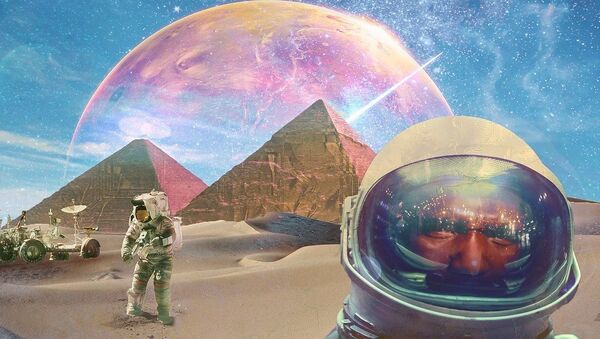According to scientists, the Dhofar desert is possibly the most realistic place on Earth that is as harsh and uninviting as the landscape of Mars.
The astronauts will take part in a lavish dress rehearsal for the first manned voyage to another planet as they attempt to retrace the footsteps of Marco Polo and the English explorer Wilfred Thesiger.
It is not the first time such an elaborate adventure has been staged in readiness for the real mission in later years. Teams have simulated identical missions in an open cast mine in southern Spain, the Sahara desert in Africa, as well as a glacier in the Alps.
"Every time we try to get bigger and better and closer to the real thing. We need to understand the capabilities and limitations of our equipment and what people need to do when they get there. This is the biggest mission we have ever done," Gernot Gromer, president of the Austrian Space Forum, revealed.
When they head to Arabia next February the space crew will go armed with a drone, an inflatable hydroponic greenhouse, several robotic rovers as well as a host of other scientific equipment.
Although they will spend their time in complete isolation, their three week journey will be closely monitored by mission control, on this occasion, based in Austria. In order to make the event all the more realistic, any signal contact between them will be delayed by 10 minutes, just as there would be in real life.
"What we know about Mars has progressed massively in the past 15 years, and I strongly believe that the first human to walk on Mars is already born. We could see permanent human settlement on the Red Planet several generations from now, and they may not be happy eating canned food," said Mr. Gromer.
A 50-strong army of support personnel — including Squadron Leader Bonnie Posselt, an RAF doctor who became Britain's first trainee space medic last year — will be on hand throughout the mission. Some 60 researchers will also follow their every footsteps as they probe the 120 square mile test site looking for 'alien' DNA or, anything else they can find in the barren desert wastes.
In addition to the obvious inhospitable conditions beyond Earth, he explained, there are a number of less well known challenges to humans.
"The way our body processes food is different enough to matter a great deal. A person's sense of taste changes in zero gravity. There are medical implications to different gravity effects. In our work we're verifying whether the ideas and designs to survive on Mars work in practice, and the gaps between theory and practice that we observe range from trivial to serious matters."
The astronauts are guaranteed to be put to the test during their mission, most notably temperatures will vary from 16 degrees and 27 Celsius, a far cry from anything Mars has to offer.
In many respects, however, the landscape in Oman will be similar to those expected on the red planet, thanks to its salt domes, sedimentary rocks and dried up riverbeds.


